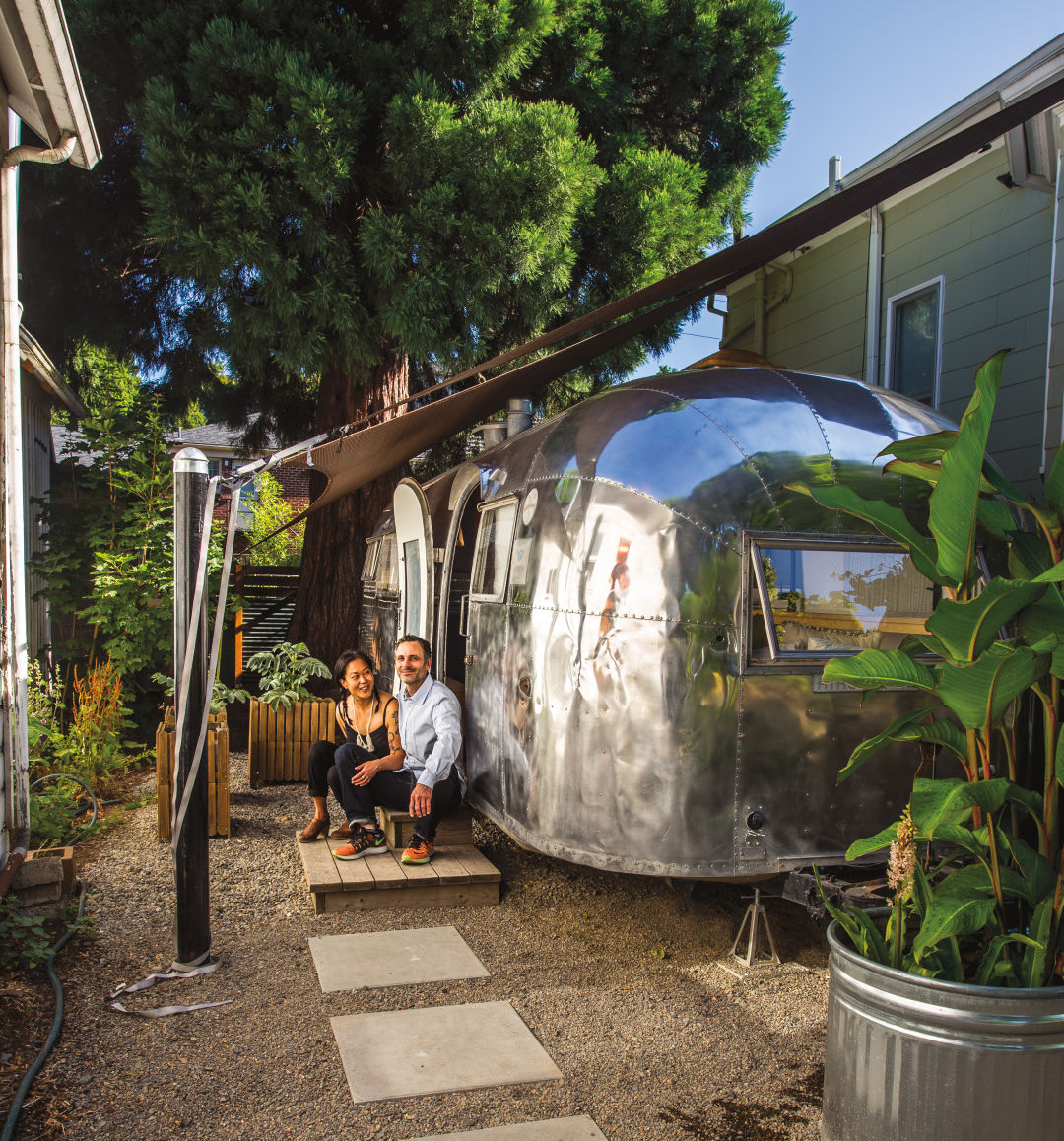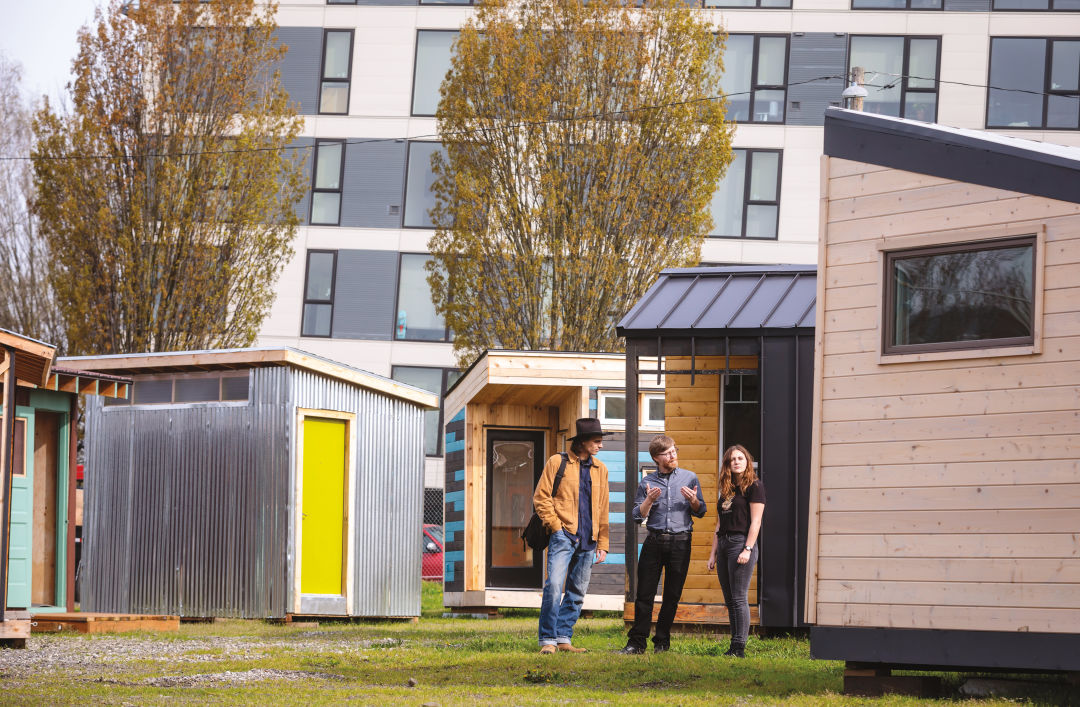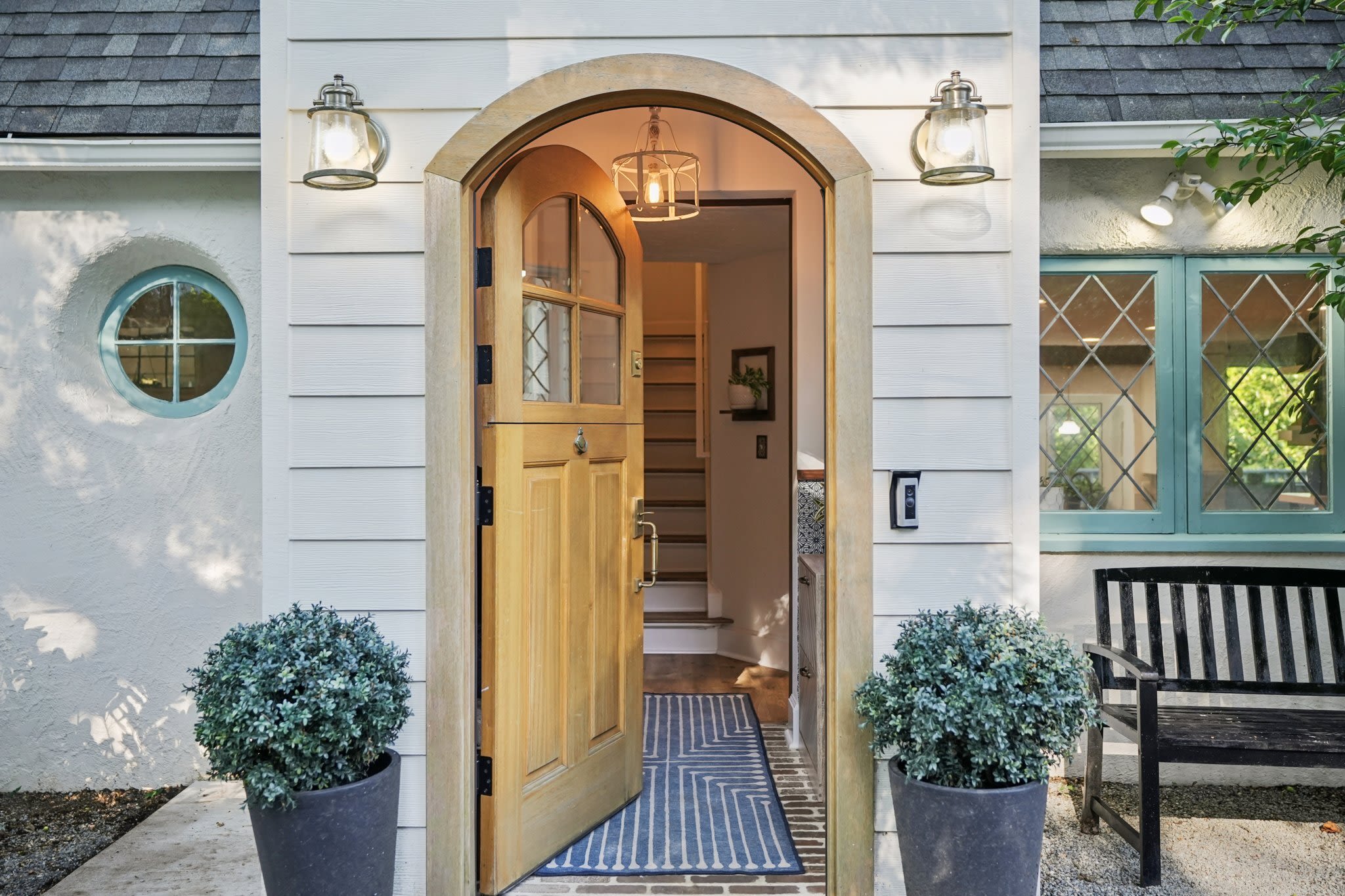Beyond Tiny Homes: 3 Inspiring Small Spaces

Cynthia Tuan and Shane Beers with their renovated 1958 Airstream
Image: Michael Novak
Silver Sequoia
This 1958 Airstream Overlander is named in honor of the 70-foot tree in the side yard of Cynthia Tuan and Shane Beers’s Southeast Portland home. Intrigued by the idea of designing a small space together, the two took on a self-imposed challenge in April 2016. Never has a 150-square-foot space seemed so big.
“We just never knew what we were getting into,” Tuan says.
Since she and Beers are parents with jobs, the side yard project truly was a side project. With a complete renovation of the classic trailer under way, the couple reveled in the convenience of having a tool library right down the street.
“We were really lucky,” Tuan notes. The trailer “was in good condition to begin with. But I’m not making light of the amount of work that we’ve put in.”
With almost every DIY project comes a challenge. For Tuan and Beers, there seemed to be one around every corner, from finding the right appliances to restoring a valuable, expensive lock. With the goal of creating an open and inviting space, some internal partition walls and twin beds were among the first to go—those were great only in some TV fantasy of the ’50s, with Mom and Dad in separate beds.
As they faced countless setbacks and took on new challenges in the ongoing Sequoia saga, Tuan and Beers found inspiration in a quote: “A ship in harbor is safe, but that’s not what ships are built for.” Tuan says it’s “just a coincidence” that their Airstream model eventually became part of the company’s “Land Yacht” series.
—RW

PSU professor Todd Ferry (center) sees tiny houses as a way to combat homelessness.
Image: Courtesy Nashco Photo
Portland State’s PODs
The Center for Public Interest Design, part of Portland State University’s School of Architecture, is no ivory tower of theory. Instead, students conceive, design, and build real-world projects for people in need. Sometimes students work in faraway locations like Haiti (on an orphanage) and Mongolia (a community center). Other times they work on projects within the 503 area code, like a mobile stage for Portland Opera or sustainable modular classrooms for local schools.
This summer, 14 homeless women moved into new dwellings in North Portland’s Kenton neighborhood: a cluster of tiny houses designed and built by CPID students in tandem with a volunteer group of local architects as part of the POD (Partners on Dwelling) Initiative. The CPID not only coordinated design and construction, but students and faculty also worked with Kenton neighbors to win community buy-in for the tiny-house development, which can be moved or expanded to other sites as land availability changes.
The “village” of 14 individual shelters—each with its own distinct design—shares a communal kitchen built in a shipping container and a communal bathroom setup supplied with water by a 6,000-gallon tank and a graywater salvage system.
“Homelessness is such a huge issue it can be hard to know where to start,” explains PSU professor Todd Ferry, who oversees the POD Initiative with CPID founder and fellow faculty member Sergio Palleroni. “But the tiny-house movement has helped, because people can see themselves living in them. That empathy is really important in how we perceive houseless folks.” —BL

Three Douglas fir trees became wood flooring and beams for Coroflot's tiny office.
Image: Courtesy Josh Partee
The Tiniest Office
The 280-square-foot office—or “mobile work unit” of Coroflot, a job-hunting and recruitment site for design professioals, hides inside Hand-Eye Supply’s Northwest Portland garage.
A design collaboration for the husband-and-wife team of Coroflot cofounder Eric Ludlum and Laurence Sarrazin of design firm Los Osos, the office began life in 2012 when the couple plotted an escape from their downtown apartment into a tiny home. Sarrazin designed and built the post-and-beam frame on top of a trailer, but finances soon put the project on hold indefinitely. In early 2016, Ludlum consolidated Coroflot’s scattered workforce (until then a loose collection of developers in Oregon and Connecticut) and needed a new Portland space for himself and four other people. Sarrazin ripped the tarp off their unfinished tiny-home project. Wheel wells became benches. Plans for insulated walls became semitransparent polycarbonate siding instead. Three Douglas fir trees from Ludlum’s parents’ old Tigard property (new owners wanted them cut down) became wood flooring and beams.
“It’s a bit sentimental, but we also didn’t want the trees to go to waste,” Ludlum says.
To fill the new space, Sarrazin created a custom furniture system: regularly spaced holes in the trailer’s wooden framing allowed her to arrange and configure desks, shelves, chairs, benches, and even foam basketball hoops. The simple floor plan coupled with the modular furniture means the MWU could be adapted to other uses—say, a true “roadworthy” office, a pop-up retail store, or a mobile classroom.
“The investment is not tied to the building,” says Sarrazin. “This could be one version of its skin—the next version could be used for on the road.” —MP




